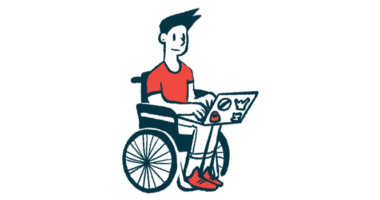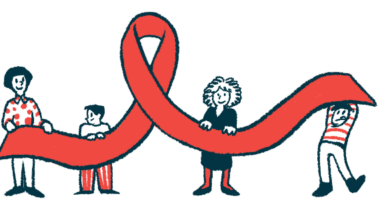New cell-based system may help speed treatment discovery
The method may allow large-scale screening of potential medicines for ALS

A newly developed cell-based system, made of nerve cells connected to muscle fibers, may allow the rapid, large-scale screening of potential medicines for neuromuscular conditions, such as amyotrophic lateral sclerosis (ALS).
Applied automated imaging methods, which are responsive to the new system, can be used to visualize and measure various features of nerve-muscle function and responses to experimental therapeutics.
“Our findings show that this culture system is a promising platform to study neuromuscular diseases and may be suitable to screen potential therapeutics that preserve and restore nerve-muscle connectivity,” Ivo Lieberam, PhD, study-lead author at King’s College London, in the U.K., said in a press release.
Details of the new cell-based system were published in the journal Biofabrication, in the study, “A scalable human iPSC-based neuromuscular disease model on suspended biobased elastomer nanofiber scaffolds.”
Neuromuscular diseases represent a diverse class of disorders marked by impaired communication between nerves and muscles. ALS, in particular, is characterized by the progressive loss of nerve cells called motor neurons, which extend from the brain and spinal cord to the muscles they control.
Preserving the communication between nerves and muscles in neuromuscular diseases is a major focus of therapeutic research. As such, model systems that mimic many of the features of these disorders are needed to speed the discovery and development of new therapies to slow, halt, or reverse disease progression.
Cell-based systems are used commonly in the early stages of drug development, especially those amenable to large-scale, automated screening methods that can rapidly test thousands of potential medicines. Molecules that modify disease processes in cells then are tested in more complex systems like animal models before advancing to human patients.
So far, however, systems developed to assess nerve-muscle health, which grow nerve and muscle cells together, are limited to small-scale experiments.
First scalable human neuromuscular disease model
Researchers at King’s College London, in collaboration with scientists at University College London, now have developed the first scalable human neuromuscular disease model.
The team started with small plastic plates (about three by five inches) commonly used in automated systems containing 96 wells (tiny liquid containers), one for each experiment. Specialized stretchable fibers called elastomer nanofibers were added to each well to provide a flexible base to grow cells.
Human-derived muscle cells were seeded onto the elastomer nanofibers and stimulated to form aligned muscle fibers (myofibers). Then, seeded on top of muscle fibers, were human-derived motor neurons, modified to be activated by light, and nerve-supporting astrocyte cells.
After two weeks of culture, the motor neurons and muscle fibers had formed functional neuromuscular junctions, which are specialized regions where cells communicate. In fact, when motor neurons were activated with light, there were robust myofiber contractions. Blocking the signaling between these cells prevented muscle contraction following motor neuron activation.
Researchers then created cultures using motor neurons derived from a patient harboring an ALS-associated TDP-43 mutation. According to researchers, this was “a key step toward making this platform a high-throughput tool for neuromuscular disease modelling and drug discovery.”
Muscle fiber contractions in cultures containing ALS motor neurons were reduced significantly compared with both motor neurons derived from healthy controls and ALS motor neurons where the mutation had been corrected using gene-editing methods. Corrected cells showed significantly stronger contractions than healthy controls.
Researchers also showed they could partially restore the contractility of muscle fibers in mutant ALS cultures by exposing cells to necrostatin-1, a compound that blocks an enzyme whose over-activation is associated with nerve cell death. Also, the weaker contractions seen with ALS motor neurons were improved significantly with necrostatin-1 treatment.
Pursuing potential treatments for ALS
Using the automated imaging technique, cultures containing ALS motor neurons showed decreased growth of nerve fibers (axons) and fewer neuromuscular junctions. These features also were partially restored by necrostatin-1 treatment in a dose-dependent manner.
“Taken together, these results highlight the utility of this scalable neuromuscular co-culture platform for modelling neuromuscular disease phenotypes [characteristics] and screening for therapeutic compounds,” the team wrote.
“We envisage that this [system] will pave the way for future cost-effective and rapid small molecule and gene therapy screens aimed at developing new treatments for neuromuscular diseases,” they concluded.







